What Animals Were At The Early Jardin De Plantes
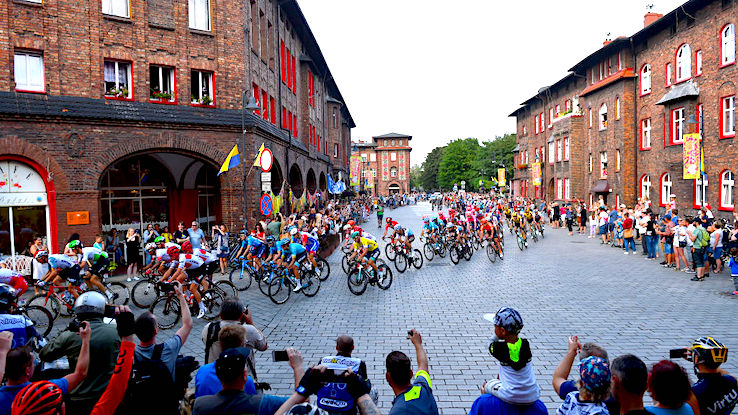
Lasting nearly iii weeks and involving several hundred competitors, the Bout de French republic is ane of the biggest sporting events across the globe — and in the world of cycling, it's definitely the biggest. This much-anticipated almanac race faced some setbacks during the COVID-19 pandemic, and while the world hasn't returned to normal yet, devoted cycling fans (and those of the states who simply love edge-of-our-seats contest) are eager for the large return slated for this summer.
In honor of the Tour de French republic'due south g 2021 re-entry to the sporting universe on Sabbatum, June 26, we're taking a look at some fun facts that'll get your anticipation building even more than. Plus, you'll detect where and how you tin watch every infinitesimal of the race from the comfort of home — no cleats or helmet necessary.
Thousands of People Are Involved
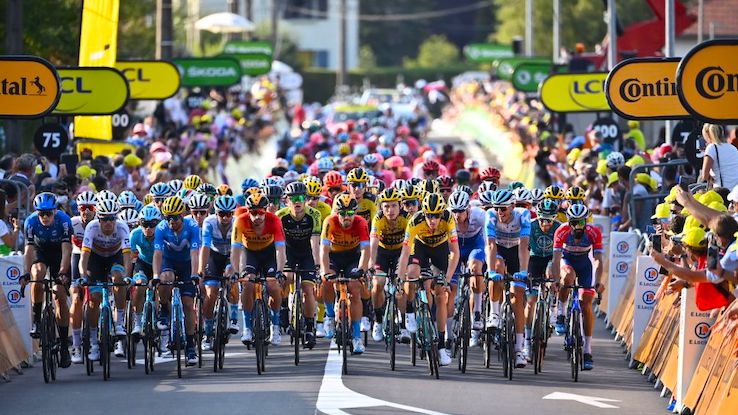
You might already know that a bevy of bicyclists participate in the race — 198 riders spread across 22 dissimilar teams compete each year. But the number of people involved in ensuring the race goes off without a hitch is much higher than the number of athletes participating. Organizers take logistics to the side by side level with team staff members, members of the race jury, thousands of security professionals and members of the media. If y'all include the spectators in that count, the numbers — pre-pandemic, at least — tin come across the millions. From city to urban center along the race route, hundreds upon hundreds of people follow the action throughout the class of the event. And organizers and back up staff keep things running smoothly to the finish line.
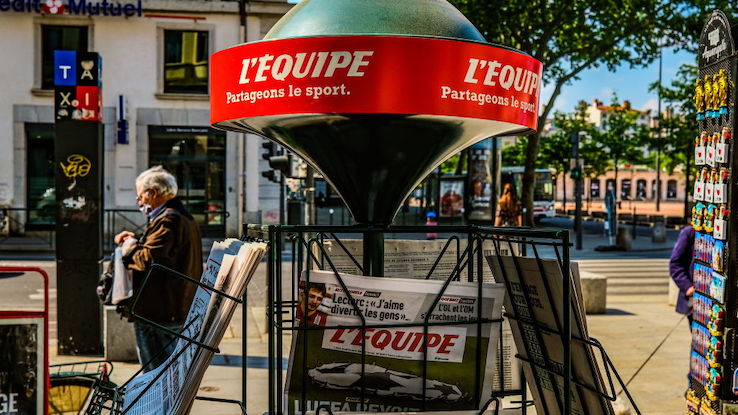
The first Bout de France wasn't held because a agglomeration of bicycling fans got together and thought information technology'd be a great idea to showtime a competition — at least non totally. It was actually a promotional result hosted with the intention of bringing more publicity to L'Auto, a French newspaper that focused on reporting details nigh different sporting events. Although L'Auto has since airtight down, the parent company of its replacement,L'Equipe, continues to organize the Tour de French republic today.
It's Not Just Large, but Also Long
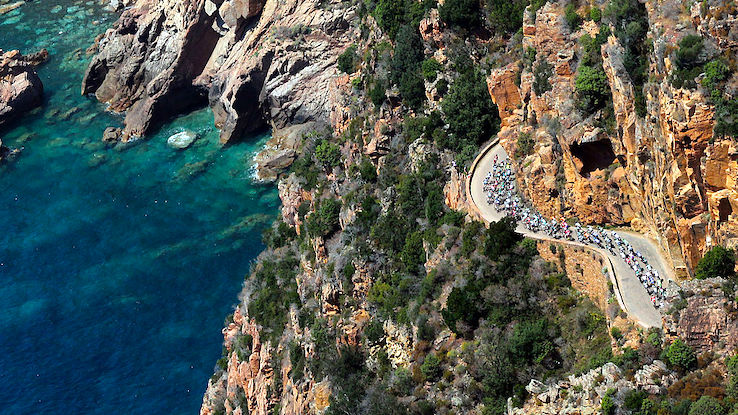
And it'south long in multiple ways, too. The race itself takes place over the grade of well-nigh a month, with 21 unlike day-long segments making upwardly the bulk of the competition. The length of the form is also extensive, still; it'south typically over ii,000 miles long and tin laissez passer through multiple neighboring countries. Information technology wasn't fifty-fifty e'er this short, either — in 1926, the course encompassed a winding 3,570 miles and took a full month for riders to finish.
Dissimilar Jerseys Hateful Dissimilar Things
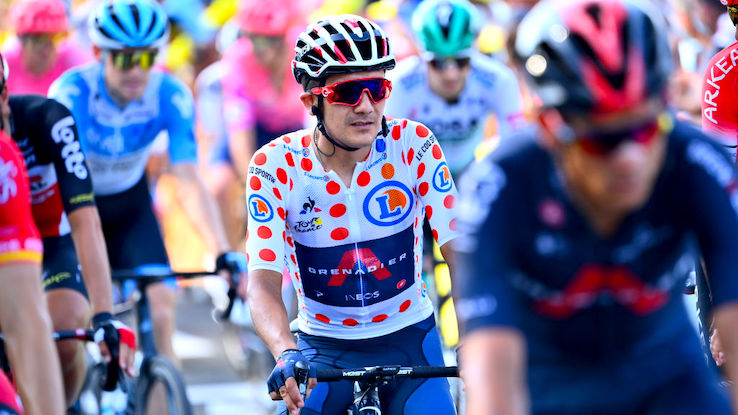
As you watch the race, you'll notice cyclists wearing the bright kits and bibs that represent their teams — but you'll also spot some even more than unique colors and designs among the pack. One of these is a yellow jersey, called the "maillot jaune," that'due south bestowed upon the racer who had the lowest cumulative ride fourth dimension for the mean solar day. Other special jerseys include the green "maillot vert," which is awarded to the rider with the most points, and the "maillot a pois" — a red and white polka-dotted jersey given to the cyclist who earns the most points during the areas of the course that accept steep inclines to climb. The rider who wears the maillot a pois is affectionately known as "the king of the mount."
In that location Was Well-nigh Just One Bout de France
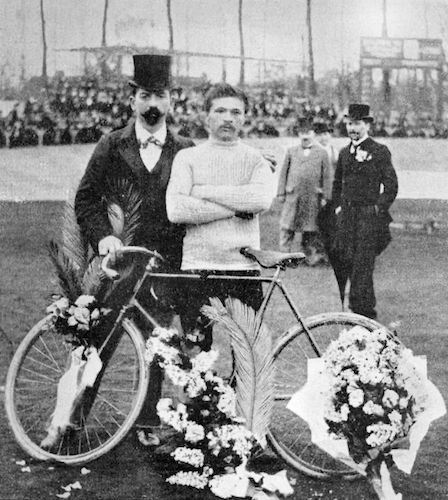
The first Tour de French republic took identify in 1903 – and that was almost the one and only iteration of the race. That's because newspaper editor Henri Desgrange, who helped organize the initial tour, was so aghast at the bear not only of the fans but also of the competitors in the 1903 race that he wanted to discontinue it despite its clear appeal. Boisterous crowds turned violent, with spectators assaulting racers as they passed along the course. The riders themselves found numerous ways to cheat, disqualifying themselves in the procedure. But the Bout de France was so lauded — and it increased circulation of L'Machine and so extensively — that the organizers had no pick merely to proceed hosting the result.
The Race Has Its Own Linguistic communication
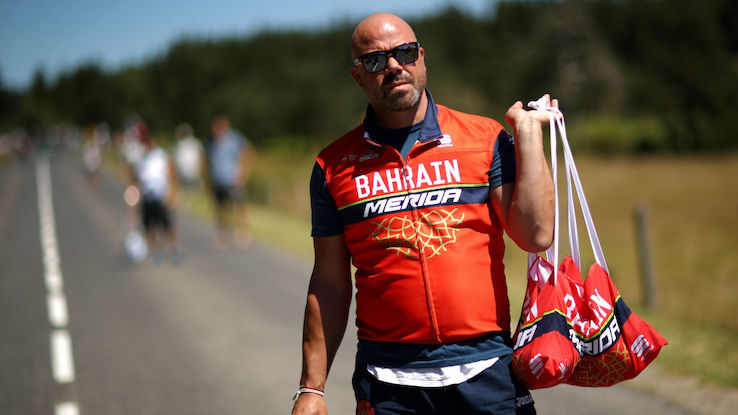
Bonking, anyone? As you're watching the Bout de France, you might hear commentators utilize some curious turns of phrase — and many of them volition be unique to the race itself. Heave your bicycling know-how by learning what these terms mean before catching one of the race segments:
- Bonking: Cyclists don't want to "bonk" during this race; it ways they've run out of energy and are likewise wiped to continue.
- Peloton: No, it'due south not the fancy practise bike you bought during the pandemic. In Bout de French republic context, a peloton is the main group of riders where most of the participants are cycling together.
- Sag Wagon: If someone bonks, they may need the assistance of the sag wagon. This is a motorcar that follows the pack of cyclists and picks up those who become as well fatigued or injured to keep riding.
- Musket Purse: While it may audio like something y'all'd find at a Civil War battleground, a musket handbag is sort of similar a bagged luncheon — but it's packed with energy gels, water, sandwiches and other fuel for the cyclists. It's besides called a "musette" or, sometimes, a "bonk handbag."
- Lanterne Rouge: In French this term means "red light," and it refers to the cyclist who's in the very final place in the race. Being in this position gets riders ample attention, and those who know they won't win sometimes compete for this distinction instead.
Y'all Tin Spotter the Activity at Home — Here's How

Now that the race has returned to regularly scheduled programming in 2021 following its 2020 pandemic postponement, yous might be eager to catch the iii-calendar week racing saga unfold from the comfort of dwelling house. Fortunately, you have the convenient selection to stream the tour live on both NBC Sports and NBC'due south Peacock streaming service.
The race coverage on Peacock is but available through Peacock Premium, a paid tier of the service that costs $4.99 — a worthwhile investment if you're a serious cycling fan who can't wait to watch this 1000 Tour. NBC Sports is accessible if you're already paying for regular cablevision, but without that subscription you won't be able to stream the programme online or watch it on Tv set unless yous spring for Peacock.
Keep in mind that, if you're non already a Peacock subscriber, you'll receive a free weeklong trial to improve assistance you determine if the service is right for you. You tin can use that to grab upwards on the race and make up one's mind if yous want to make the monthlong (or longer) investment.
Source: https://www.ask.com/lifestyle/facts-tour-de-france?utm_content=params%3Ao%3D740004%26ad%3DdirN%26qo%3DserpIndex
Posted by: worrellhavoing69.blogspot.com

0 Response to "What Animals Were At The Early Jardin De Plantes"
Post a Comment